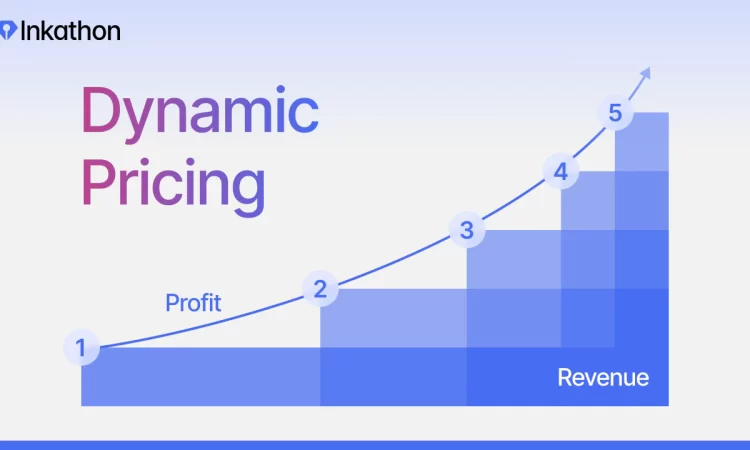
Dynamic pricing has emerged as a powerful strategy for online retailers seeking to stay competitive in an ever-evolving marketplace.
Leveraging real-time data to adjust prices in response to market conditions, customer demand, and competitor actions, dynamic pricing enables businesses to maximize profitability, optimize stock levels, and enhance customer satisfaction.
This article explores the benefits of dynamic pricing, its key components, and how webshops can use it to drive growth and efficiency.
What is dynamic pricing?
Dynamic pricing is a flexible strategy in which product prices are adjusted based on various factors such as demand, competitor prices, stock levels, and seasonal trends.
Unlike traditional fixed pricing, dynamic pricing relies on continuous data inputs and automation to change prices strategically, helping businesses strike the right balance between profitability and competitiveness.
Implementing a dynamic pricing system can be transformational for online retailers. With the right approach, it allows businesses to adjust prices to optimize revenue, maintain a competitive edge, and respond proactively to market shifts.
This strategy can include everything from increasing prices for high-demand items to discounting slow-moving products, all in real time.
Why dynamic pricing is crucial for e-commerce success
Online retailers face unique challenges: intense competition, fluctuating consumer demand, and the ever-present possibility of stock imbalances. Dynamic pricing addresses these challenges head-on, offering several key benefits that make it a vital component of e-commerce success.
1. Boosting profitability with data-driven pricing
One of dynamic pricing’s primary advantages is its potential to maximize profitability. By leveraging competitor pricing data, webshops can set prices to remain competitive while protecting profit margins.
Automated dynamic pricing platforms allow retailers to set specific parameters, such as minimum profit margins, so prices adjust based on real-time market conditions without sacrificing profitability.
This approach ensures that retailers can still achieve healthy profits, even in highly competitive environments.
2. Enhancing customer satisfaction
Dynamic pricing is not just about increasing prices; it can also involve lowering prices to improve sales and customer satisfaction.
Retailers can attract price-sensitive buyers by responding to competitor prices and aligning with customer expectations without eroding long-term profitability.
When implemented effectively, dynamic pricing helps retailers to maintain price positions that resonate with their target audience, ultimately leading to higher customer loyalty and increased conversion rates.
3. Efficient inventory management
Overstocking and understocking are costly challenges for online retailers. Dynamic pricing helps optimize stock levels by adjusting prices based on inventory.
For instance, if a particular product is in surplus, a lower price point may encourage more sales and help clear excess inventory.
Conversely, products with limited stock or high demand can see price increases, preventing stockouts and maximizing revenue.
This dynamic adjustment ensures that webshops maintain a balanced inventory, reducing storage costs and minimizing revenue losses due to outdated or excess stock.
Key elements of an effective dynamic pricing strategy
For webshops interested in implementing dynamic pricing, it’s essential to understand the key components that make up an effective strategy.
While the specific approach will vary depending on business goals, the following elements are fundamental to successful dynamic pricing:
Real-time competitor monitoring
A competitive analysis is a foundational aspect of dynamic pricing. Monitoring competitor prices enables retailers to make informed decisions about their pricing strategies.
Many automated systems can collect data on competitors’ prices and even alert retailers when significant changes occur. This intelligence is crucial for staying competitive, especially during high-stakes periods such as holiday seasons, product launches, or major sales events.
Advanced product segmentation
To fully leverage dynamic pricing, it is important to group products based on characteristics like demand, seasonality, and sales performance.
For example, products that experience high demand and consistent sales can be grouped into a “high-performers” segment. These products can be priced at a premium to maximize revenue.
On the other hand, products that move slowly may benefit from more aggressive pricing to clear stock.
This segmentation approach ensures that each product group is priced strategically based on its unique performance profile.
Dynamic tags within pricing platforms can automate this process, allowing for more efficient and tailored pricing across various products.
Automated pricing rules
Automation is the engine behind dynamic pricing. Through automated pricing rules, webshops can set criteria for adjusting prices based on competitor data, inventory levels, demand, and other factors.
For example, a rule might be put to decrease prices on products that haven’t sold in the past 30 days, encouraging sales and clearing space in the warehouse. Another rule might raise prices on high-demand items running low on stock.
Automated pricing not only reduces the time and effort involved in manually managing prices, but it also allows webshops to react instantly to market shifts.
This speed and responsiveness give online retailers a significant advantage over competitors who may rely on static pricing.
Implementing dynamic pricing: Best practices for webshops
For online retailers, implementing dynamic pricing is a strategic investment that requires careful planning and execution. Below are some best practices to ensure a successful implementation:
Start small and test frequently
Dynamic pricing is a complex process, so it’s best to begin with a limited number of products or product categories.
This initial phase allows retailers to gather data on customer responses and identify areas for improvement before expanding the strategy across the entire catalog. Frequent testing and monitoring are crucial to refining pricing rules and achieving optimal results.
Monitor and adjust continuously
Dynamic pricing is not a one-time setup. Market conditions, competitor actions, and customer behavior change frequently, and your pricing strategy should evolve accordingly.
Reviewing and adjusting pricing parameters ensures the system remains effective and aligned with your business goals. Most dynamic pricing platforms offer insights and reporting tools that make this process manageable and informative.
Prioritize customer value
While dynamic pricing is powerful, it should always align with your brand’s value proposition and customer expectations.
Abrupt or frequent price changes can alienate customers, so consider setting rules that keep price adjustments within reasonable limits. Maintaining a positive customer experience should be a core consideration, especially for retailers with loyal, repeat customers.




